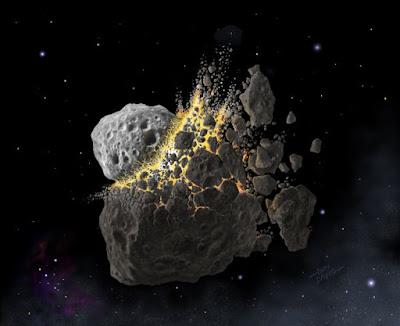 |
| Olympus Mons, NASA/MOLA Science Team/ O. de Goursac, Adrian Lark |
Topics: Mars, Planetary Science, Space Exploration, Spaceflight
Olympus Mons is the most extreme volcano in the solar system. Located in the Tharsis volcanic region, it's about the same size as the state of Arizona, according to NASA. Its height of 16 miles (25 kilometers) makes it nearly three times the height of Earth's Mount Everest, which is about 5.5 miles (8.9 km) high.
Olympus Mons is a gigantic shield volcano, which was formed after lava slowly crawled down its slopes. This means that the mountain is probably easy for future explorers to climb, as its average slope is only 5 percent. At its summit is a spectacular depression some 53 miles (85 km) wide, formed by magma chambers that lost lava (likely during an eruption) and collapsed.
Mars is a planet mostly shaped by wind these days, since the water evaporated as its atmosphere thinned. But we can see extensive evidence of past water, such as regions of "ghost dunes" found in Noctis Labyrinthus and Hellas basin. Researchers say these regions used to hold dunes that were tens of meters tall. Later, the dunes were flooded by lava or water, which preserved their bases while the tops eroded away.
Old dunes such as these show how winds used to flow on ancient Mars, which in turn gives climatologists some hints as to the ancient environment of the Red Planet. In an even more exciting twist, there could be microbes hiding in the sheltered areas of these dunes, safe from the radiation and wind that would otherwise sweep them away.
Touring Mars, Elizabeth Howell, Space.com



